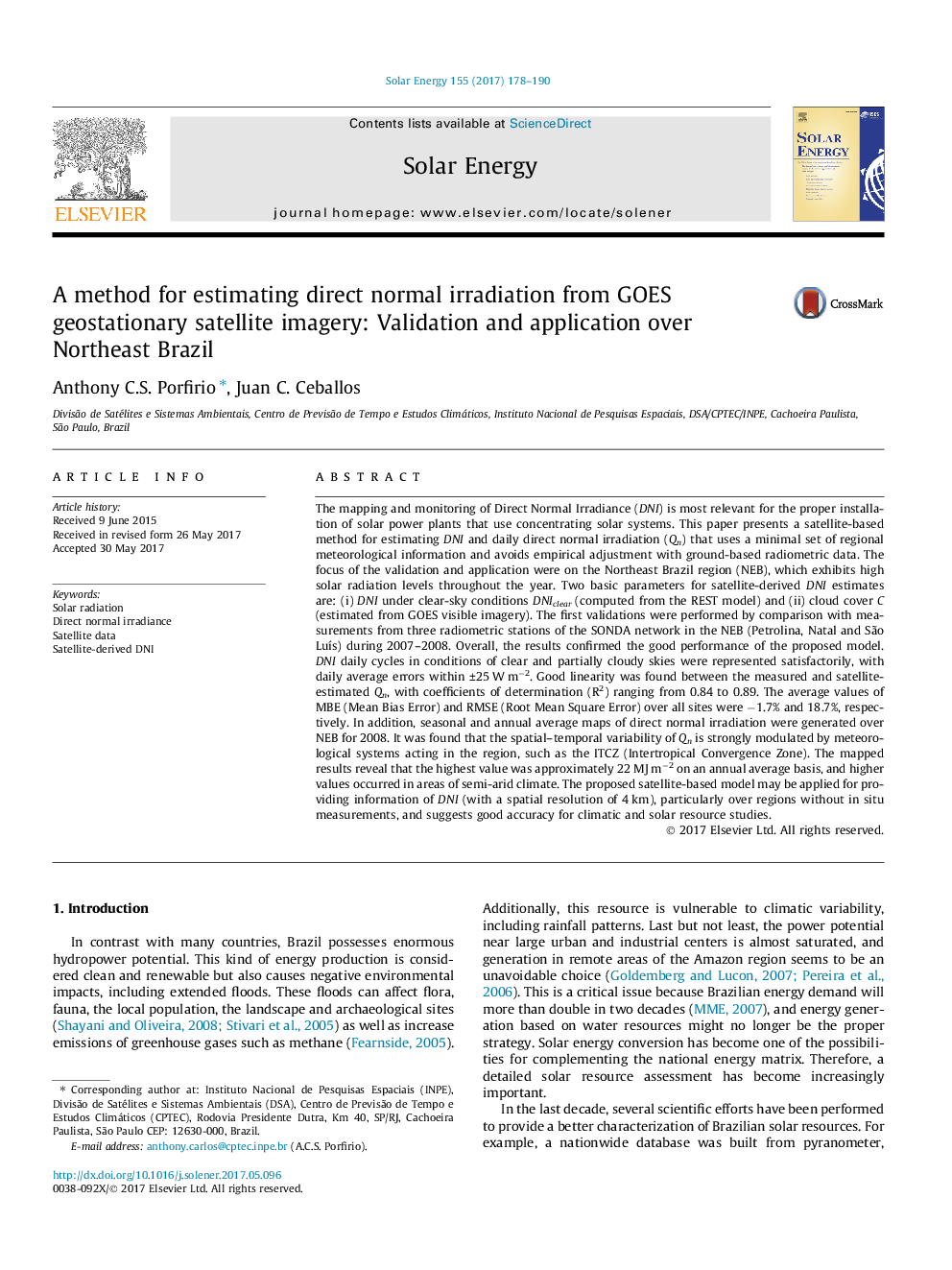| کد مقاله | کد نشریه | سال انتشار | مقاله انگلیسی | نسخه تمام متن |
|---|---|---|---|---|
| 5450613 | 1513063 | 2017 | 13 صفحه PDF | دانلود رایگان |
عنوان انگلیسی مقاله ISI
A method for estimating direct normal irradiation from GOES geostationary satellite imagery: Validation and application over Northeast Brazil
دانلود مقاله + سفارش ترجمه
دانلود مقاله ISI انگلیسی
رایگان برای ایرانیان
کلمات کلیدی
موضوعات مرتبط
مهندسی و علوم پایه
مهندسی انرژی
انرژی های تجدید پذیر، توسعه پایدار و محیط زیست
پیش نمایش صفحه اول مقاله

چکیده انگلیسی
The mapping and monitoring of Direct Normal Irradiance (DNI) is most relevant for the proper installation of solar power plants that use concentrating solar systems. This paper presents a satellite-based method for estimating DNI and daily direct normal irradiation (Qn) that uses a minimal set of regional meteorological information and avoids empirical adjustment with ground-based radiometric data. The focus of the validation and application were on the Northeast Brazil region (NEB), which exhibits high solar radiation levels throughout the year. Two basic parameters for satellite-derived DNI estimates are: (i) DNI under clear-sky conditions DNIclear (computed from the REST model) and (ii) cloud cover C (estimated from GOES visible imagery). The first validations were performed by comparison with measurements from three radiometric stations of the SONDA network in the NEB (Petrolina, Natal and São LuÃs) during 2007-2008. Overall, the results confirmed the good performance of the proposed model. DNI daily cycles in conditions of clear and partially cloudy skies were represented satisfactorily, with daily average errors within ±25 W mâ2. Good linearity was found between the measured and satellite-estimated Qn, with coefficients of determination (R2) ranging from 0.84 to 0.89. The average values of MBE (Mean Bias Error) and RMSE (Root Mean Square Error) over all sites were â1.7% and 18.7%, respectively. In addition, seasonal and annual average maps of direct normal irradiation were generated over NEB for 2008. It was found that the spatial-temporal variability of Qn is strongly modulated by meteorological systems acting in the region, such as the ITCZ (Intertropical Convergence Zone). The mapped results reveal that the highest value was approximately 22 MJ mâ2 on an annual average basis, and higher values occurred in areas of semi-arid climate. The proposed satellite-based model may be applied for providing information of DNI (with a spatial resolution of 4 km), particularly over regions without in situ measurements, and suggests good accuracy for climatic and solar resource studies.
ناشر
Database: Elsevier - ScienceDirect (ساینس دایرکت)
Journal: Solar Energy - Volume 155, October 2017, Pages 178-190
Journal: Solar Energy - Volume 155, October 2017, Pages 178-190
نویسندگان
Anthony C.S. Porfirio, Juan C. Ceballos,